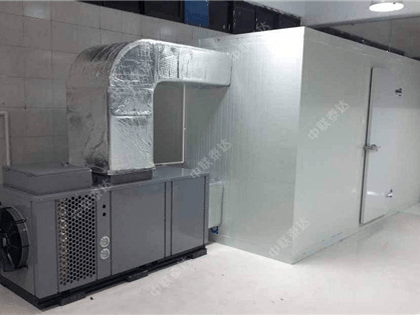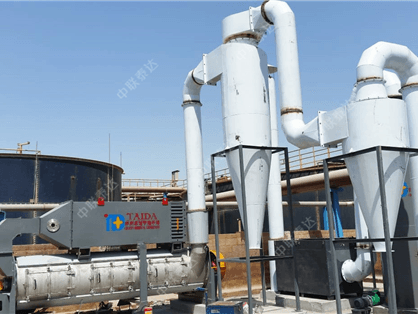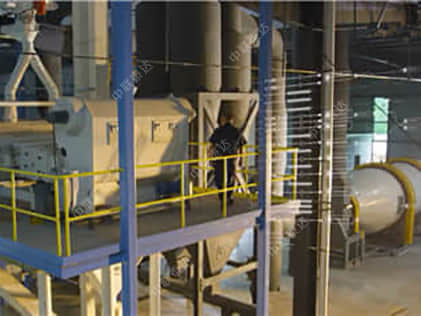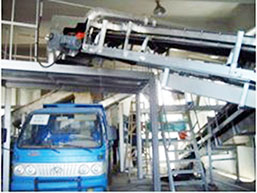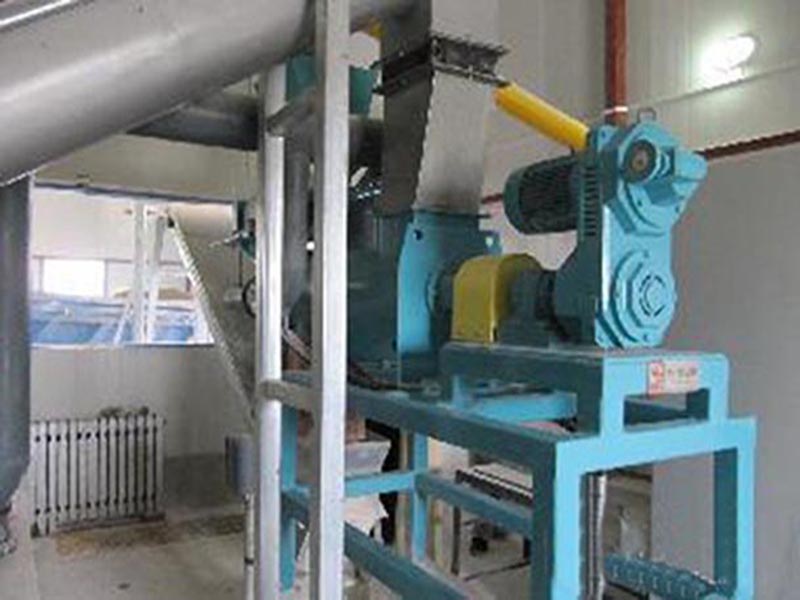Technical introduction
Sludge paddle dryer dried through heat contacting. There are three types of paddle, round plate type, wedge type and hollow screw type. There could be two shafts or four shafts structure.
Largest two shaft paddle dryer could being designed with 200 square meter heating area, largest four shaft type could be 400 square meter heating area. Heating source could be hot water, steam or thermal oil. Temperature of heating medium is available ranges from 60-320 centigrade.
There is large amount of this kind of waste liquor in our country. Generally, one-ton steel can produce 55 to 72 -kg waste acid. At present, steel and iron industry had become a giant source of water consumption and waste acid production. According to relevant statistics, iron and steel industry can produce more than 30-cubic-meter waste water. Aiming at this kind of water, there are main two methods, namely Acid-base neutralization and Hydrochloric acid regeneration.
Sludge dryer can dry sludge, which provides convenience for the production of organic fertilizer. It is the best choice for enterprises which produces organic fertilizer. Sludge dehydration can make sludge used for agriculture and fuels, even makes the reduction of landfill land possible. Sludge dryer can be widely applied to drying active sludge, sewage sludge, petrochemical sludge, paper-making sludge, dyeing sludge, leather sludge, electrostatics sludge, municipal sludge and biological slags.
Advantages
1. High drying efficiency; high evaporation capacity;
2. The dryer support continuous operation and batch operation, support vacuum drying for thermal sensitive material and normal drying. Support heating, evaporating and cooling.
3. Thermal oil, steam, hot water and chilling fluid are available to be used as heating/cooling resource;
4. Special structure of paddle which has large heating area;
5. Structure of dryer is very compact, almost of dryer could be transported by normal container;
6. We develop high paddle dryer which is suitable for hazardous or the waste need to recover solvent. We own the patent of high vacuum paddle dryer.
7. Combined with oversea technology; the dryer adopts one bearing seat in whole piece; cooling device is available for choice;
8. Whole body is strengthened, which could promise a longer life span;
9. The plate adopts integral welding which has better strength.
10. Special design for preventing raw material blocking up during feeding;
Working principle
This dryer can dry sludge with 90% moisture content to dry final products. Aiming at the clumping feature of sludge, we change the structure of material plates. We adopt combined automatic cleaning device, which greatly expands the application of this dryer. It can not only dry various sludge, but also can dry various highly vicious materials.
Sludge is sent to material conducting plate by feeder through chute. With the rotation of drum, sludge is led to inclined lifting plate and led to central place of drum. Then, materials are spread gradually and form a material curtain through which hot airflow pass. Sludge get preheated and partial moisture content is evaporated. When sludge is spread and moves to grate style wing, materials will mix with preheated grated style wing. Heat will be transferred to materials and partial moisture will be evaporated. Meanwhile, wing plate will lift and spread repeatedly. Materials will exchange heat with hot airflow. At the same time, cleaning device set in materials will slide along circular lifting plate and clean materials which stick on inner wall. When cleaning device rotate out vertical line and drag at the back side. Then, materials stick on outer wall of lifting plate will be eliminated. With continuous rotation of rotary drum, partial moisture content is evaporated and sludge will be further dried. Meanwhile, cleaning device also can crush materials cakes. Drying speed will be increased. After drying, materials will become low-water and loose materials and discharged out from discharging port.
Technical parameters
|
Model |
Drum Diameter (mm) |
Drum Length (mm) |
Drum Volume(m3) |
Rotary Speed (r/min) |
Power (kW) |
Weight (t) |
|
HG0.6×6 |
600 |
6000 |
1.7 |
1-8 |
3 |
2.9 |
|
HG0.8×8 |
800 |
8000 |
4 |
1-8 |
4 |
3.5 |
|
HG1×10 |
1000 |
10000 |
7.9 |
1-8 |
5.5 |
6.4 |
|
HG1.2×6 |
1200 |
6000 |
6.8 |
1-6 |
5.5 |
6.7 |
|
HG1.2×8 |
1200 |
8000 |
9 |
1-6 |
5.5 |
8.5 |
|
HG1.2×10 |
1200 |
10000 |
11.3 |
1-6 |
7.5 |
10.7 |
|
HG1.2×12 |
1200 |
12000 |
13.6 |
1-6 |
7.5 |
12.5 |
|
HG1.5×8 |
1500 |
8000 |
14.1 |
1-5 |
11 |
14.8 |
|
HG1.5×10 |
1500 |
10000 |
17.7 |
1-5 |
11 |
16 |
|
HG1.5×12 |
1500 |
12000 |
21.2 |
1-5 |
15 |
17.8 |
|
HG1.5×15 |
1500 |
15000 |
26.5 |
1-5 |
15 |
19.2 |
|
HG1.8×10 |
1800 |
10000 |
25.5 |
1-5 |
15 |
18.1 |
|
HG1.8×12 |
1800 |
12000 |
30.6 |
1-5 |
18.5 |
21 |
|
HG1.8×15 |
1800 |
15000 |
38.2 |
1-5 |
18.5 |
26.3 |
|
HG1.8×18 |
1800 |
18000 |
45.8 |
1-5 |
22 |
31.2 |
|
HG2.2×12 |
2200 |
12000 |
45.6 |
1-4 |
22 |
31 |
|
HG2.2×15 |
2200 |
15000 |
53.2 |
1-4 |
30 |
36.2 |
|
HG2.2×18 |
2200 |
18000 |
68.4 |
1-4 |
30 |
43.3 |
|
HG2.2×20 |
2200 |
20000 |
76 |
1-4 |
30 |
48.8 |
|
HG2.4×15 |
2400 |
15000 |
67.9 |
1-4 |
30 |
43.7 |
|
HG2.4×18 |
2400 |
18000 |
81.4 |
1-4 |
37 |
53 |
|
HG2.4×20 |
2400 |
20000 |
90.5 |
1-4 |
37 |
60.5 |
|
HG2.4×24 |
2400 |
24000 |
108.6 |
1-4 |
45 |
69.8 |
|
HG2.8×18 |
2800 |
18000 |
110.8 |
1-4 |
45 |
71.6 |
|
HG2.8×20 |
2800 |
20000 |
123.2 |
1-3 |
55 |
76.8 |
|
HG2.8×24 |
2800 |
24000 |
147.8 |
1-3 |
55 |
85 |
|
HG2.8×28 |
2800 |
28000 |
172.4 |
1-3 |
75 |
95 |
|
HG3×20 |
3000 |
20000 |
141.4 |
1-3 |
55 |
87 |
|
HG3×24 |
3000 |
24000 |
169.7 |
1-3 |
75 |
105 |
|
HG3×28 |
3000 |
28000 |
198 |
1-3 |
90 |
123 |
|
HG3.2×24 |
3200 |
24000 |
193 |
1-3 |
90 |
120 |
|
HG3.2×28 |
3200 |
28000 |
225.2 |
1-3 |
90 |
140 |
 中文
中文 English
English Home
Home

